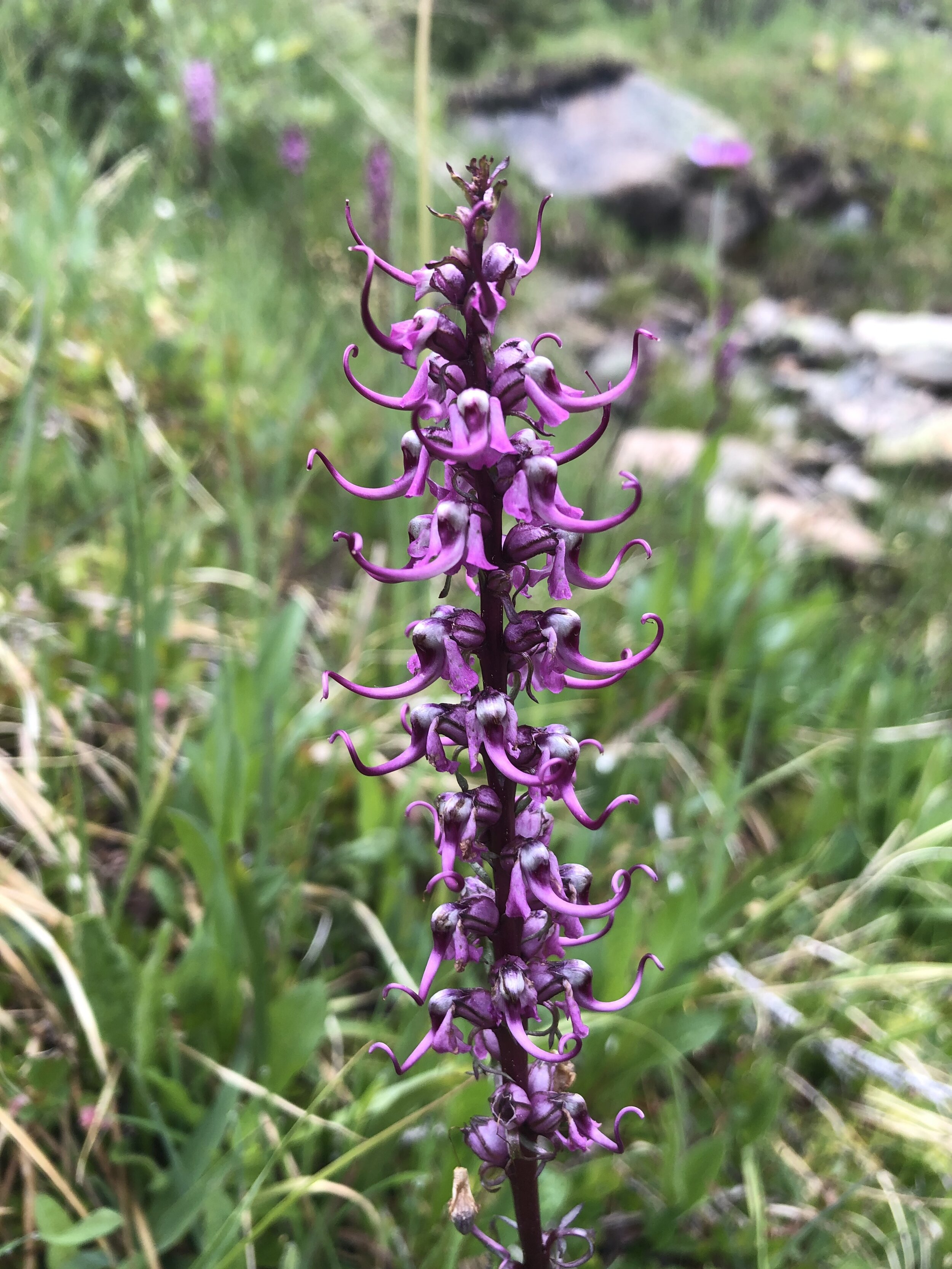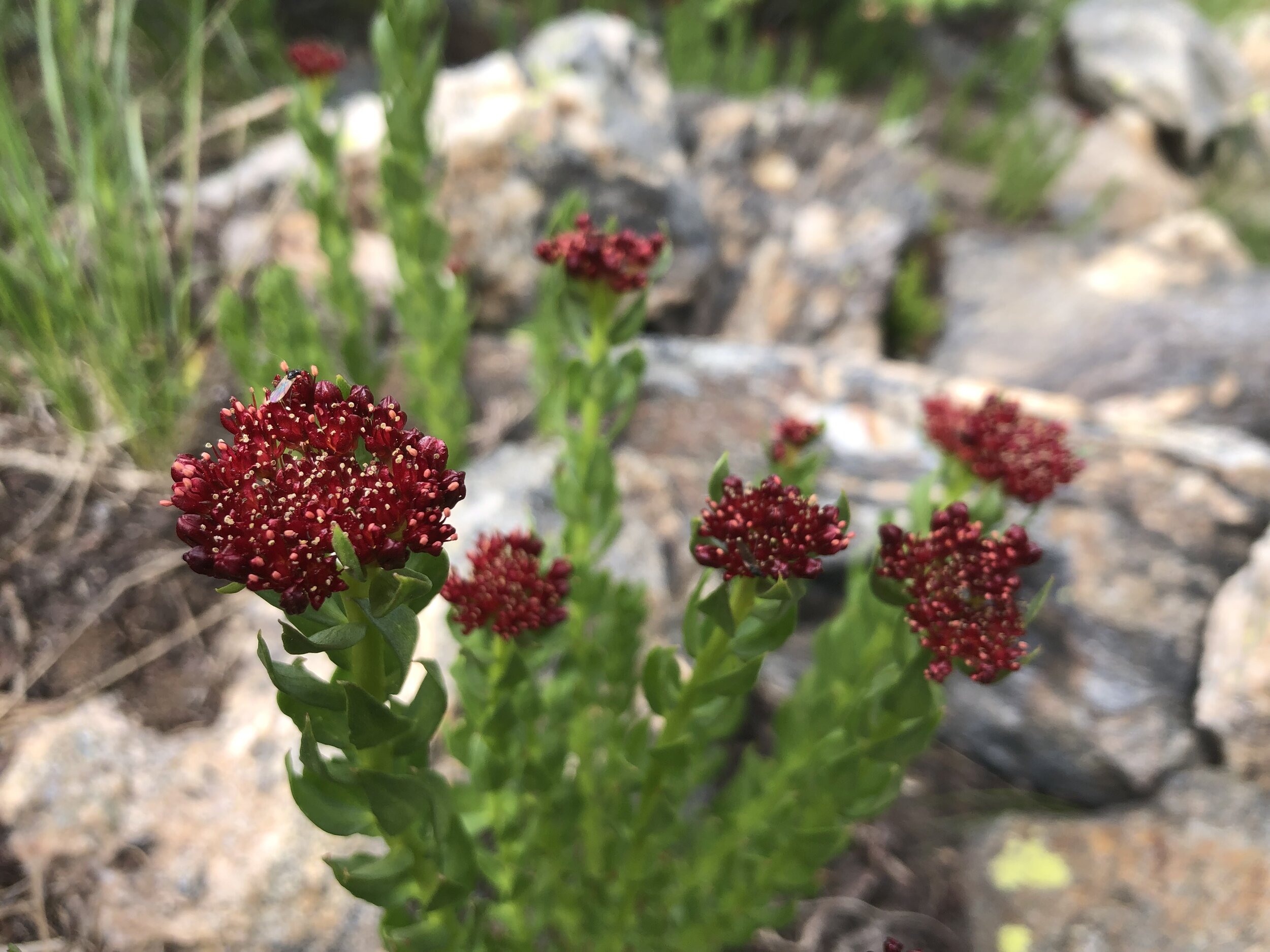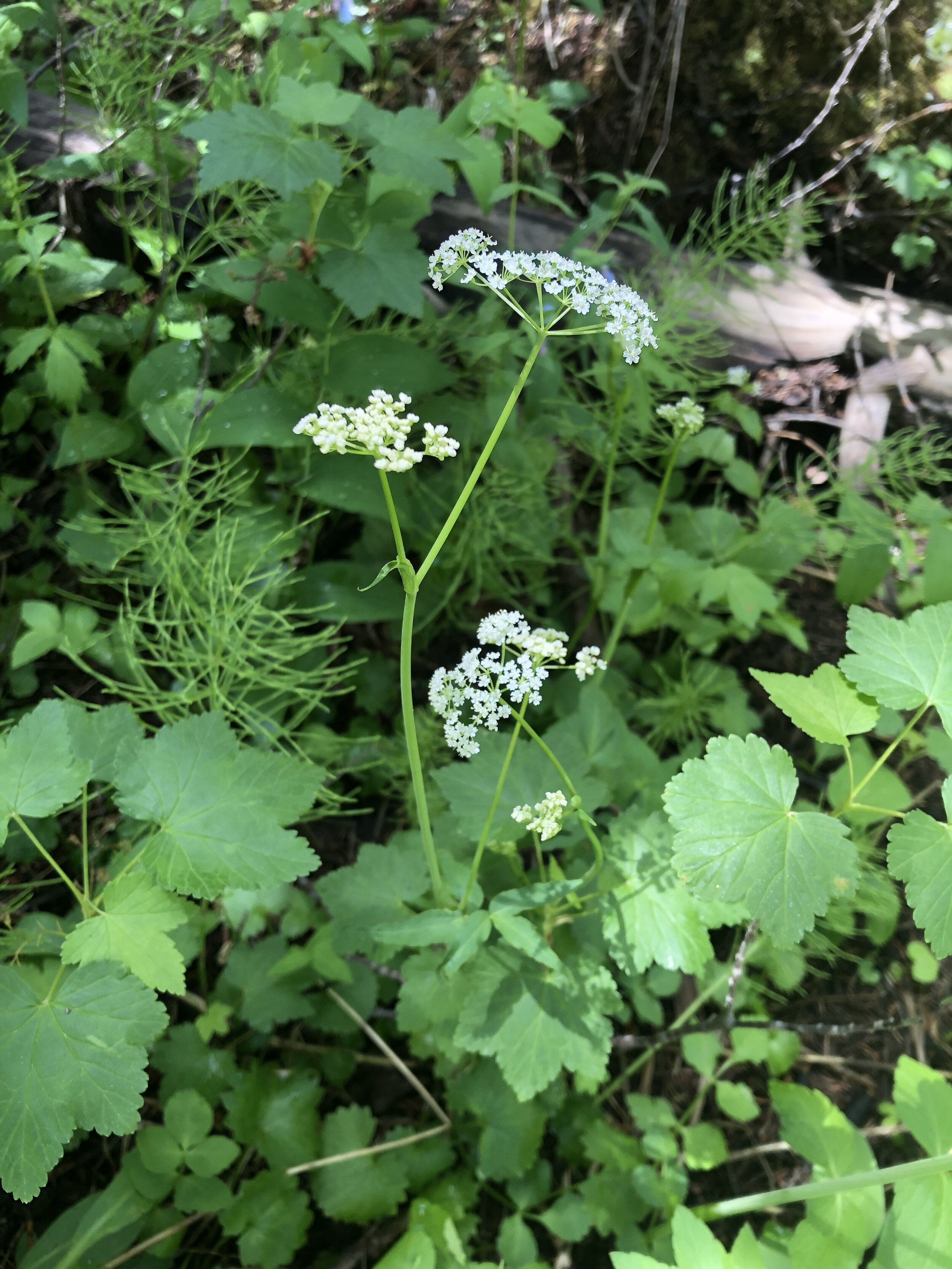Draba streptobrachia, June 30, 2021
D. streptobrachia, June 30, 2021
D. streptobrachia, with siliques, Mountain Boy, 12,600’, 7.8.21
Common & scientific name
Alpine tundra draba, Draba streptobrachia
Family
Mustard, Brassicaceae
Location
Twining, 13,400’
Fun, weird, helpful, or little known fact
This uncommon Draba’s names, common and scientific, say it all: found only on high peaks, and sporting twisted siliques (seed pods): see photos below. To tell this Draba apart from the others: leaves and stem have variable, star-shaped, dendritic, and/or pectinate hair, fairly sessile (not long stalked), not usually dense (but this, too is variable). Its siliques are largely glabrous but with some hairs on the edges. It can have 1-3 leaves on its stems. The stem is (more) densely hairy (generally) than the leaves.
D. streptobrachia, with siliques, Mtn. Boy 12,600’, July 8, 2021

































